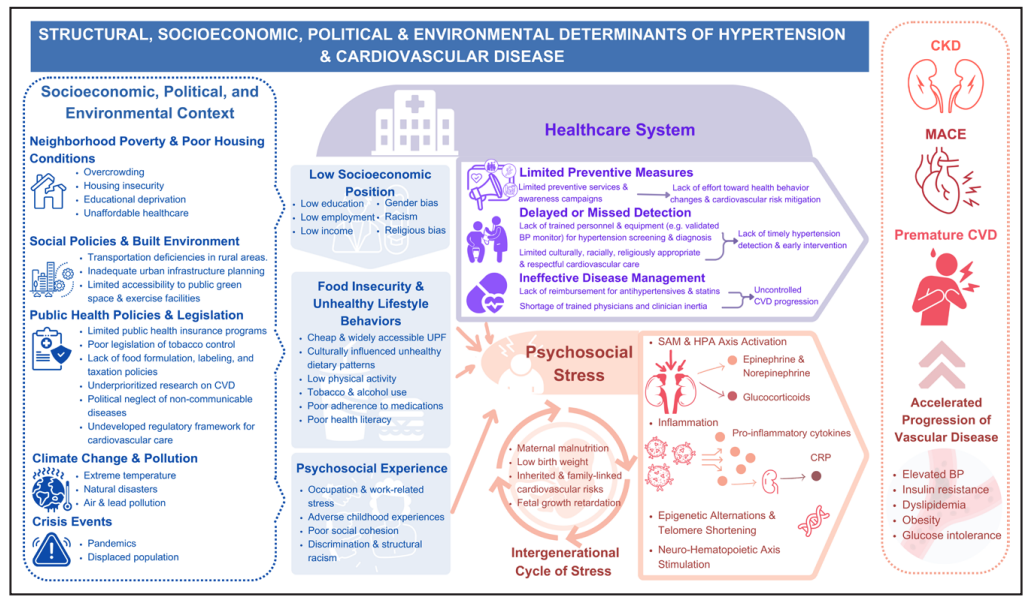
Hypertension remains a leading, yet preventable, cause of global mortality, claiming over 10 million lives annually. Despite its significant impact, blood pressure control rates remain alarmingly low. While high-income countries achieve approximately 50% control, this figure plummets to less than 20% in low- and middle-income nations¹.
Cardiovascular disease mortality persists as a major public health concern, particularly affecting vulnerable populations in low-income, rural, and underserved communities. A recent review in the American Heart Association Journal Hypertension, highlights the role of social determinants of health (SDOH) in driving hypertension and cardiovascular disease burdens both in the United States and globally.
SDOH encompass a broad range of socioeconomic, political, and environmental factors that significantly impact health outcomes. These include, poverty, housing conditions, public policies, climate change, pollution, and crisis events. These determinants increase the risk of premature cardiovascular disease and major adverse cardiac events by affecting healthcare systems and causing psychosocial stress. The resulting stress response activates pathways, such as the sympathetic-adreno-medullar and hypothalamic-pituitary-adrenal axis.
Disparities in cardiovascular health persist in high-income countries, with rural populations and racial/ethnic minorities experiencing disproportionately higher mortality rates. Non-Hispanic Black individuals are particularly affected, showing higher hypertension, earlier onset of cardiovascular disease, and increased mortality compared to white counterparts. The infographic below provides a visual overview of these key points.

The objectives outline how to address disparities and enhance blood pressure control, ultimately reducing the burden of cardiovascular disease.
- Enhance national coordination of hypertension and CVD prevention and mitigate SDOH impact on socially vulnerable populations.
- Integrate social determinants in hypertension care.
- Ensure access to essential medications for hypertension and CVD among the socially disadvantaged and expand social insurance schemes.
- Leverage maternal and child health and infectious disease care delivery platforms.
- Start hypertension and CVD preventive efforts early in children and adolescents.
- Provide pro-poor health food and environmental policies and subsidies.
- Address racism as a social issue.
- Leverage digital technology and enhance digital literacy.
- International agencies and donor support for hypertension care.
- Research and capacity strengthening.
These objectives may initially seem overwhelming. Nevertheless, addressing social determinants of health is a critical first step towards achieving improved blood pressure control at the individual patient level and, consequently, reducing cardiovascular mortality.
Additional Resources:
- Health Equity Indicators Toolkit | CDC
- Great Plains QIN – Health Equity Series: Continuing the Conversation
References:

Listen To Our Podcast: Q-Tips For Your Ears!
Social Determinants of Health: Understand what social drivers are and how they impact the health of individuals and communities.
Health Disparities – Understand the Difference in Health Outcomes: Health disparities exist in every community. Understanding how they are identified and how this information is utilized may help you understand and be aware of your communities’ efforts or needs.
